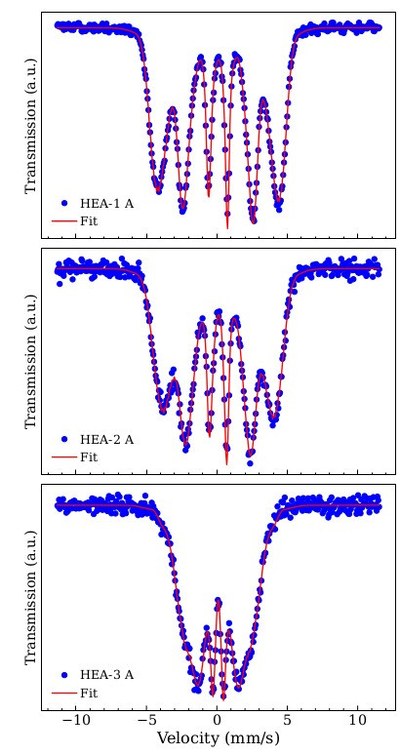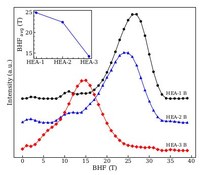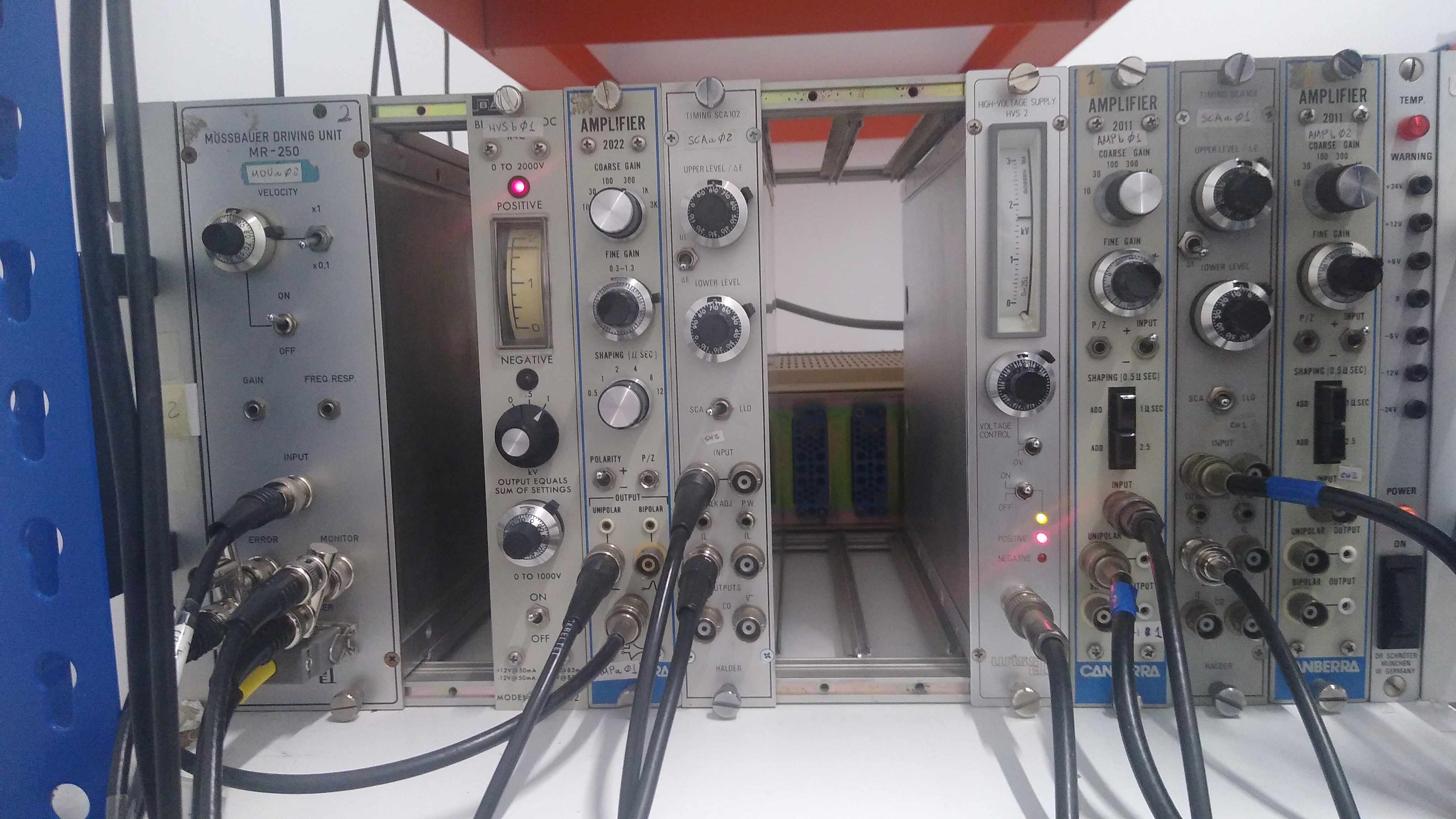Mössbauer Spectroscopy laboratory
The Mössbauer effect is the nuclear resonant absorption without recoil of gamma rays and is especially suitable for the study of Fe-containing alloys. One of the key features of Mössbauer spectroscopy is the fact that it is a local probe, which allows, on the one hand, the non-destructive study of chemically and structurally disordered materials and, on the other hand, of to study the occupations or vacancies of the different crystallographic places in crystalline materials. This makes this technique one of the few spectroscopies capable of doing so without the use of synchrotron radiation. This is especially useful in the study of metals and alloys where, for example, the substitution of some Fe atoms in the structure can improve or reduce the magnetism of the sample. The high sensitivity of Mössbauer spectroscopy has been used to identify the presence of small amounts of phases in compounds. This is of particular relevance in environmental studies for the detection and quantification of pollutants but is also of industrial interest, especially in the metallurgical industry, because it opens the possibility, for example, of achieving economic benefits of waste after the identification and elimination of the desired elements or phases.
The Mössbauer spectroscopy laboratory is a second-class radioactive facility authorized by the Radioactive Activities Coordination Service of the General Directorate of Energy, Industrial Safety and Mining Safety. We work with one or two 57Co encapsulated sources with a maximum activity of 1.5 GBq. We have the capacity to measure up to 4 different samples in solid state at room temperature and pressure. The effective thickness of Fe in the samples should be of the order of 5-10 mg / cm2 and the minimum Fe content should be around 0.5% by weight, although depending on the type of samples could be higher, of the order of 5-10% by weight. The spectra obtained are calibrated with an α-Fe sample and, at the request of the user, the files with the spectra, their interpretation, the corresponding adjustments and the analysis of results can be delivered.
The laboratory is part of the facilities of the Materials Characterization Group of the Universitat Politècnica de Catalunya, a research group with extensive experience in the research of new materials, especially the so-called metal glasses, and also of materials of cultural and historical interest. He is part of a consolidated research group recognized by the Generalitat de Catalunya (SGR) and has continuously enjoyed research projects funded by the Government of Spain, the Generalitat de Catalunya and the European Union. Finally, note that its members are regular users of large scientific facilities, such as synchrotrons, where they have achieved measurement time in more than 60 projects in ISIS, ILL, ESRF, DIAMOND, ALBA, SOLEIL, ANKA and ALS.
1.Determination of the structural configuration of High-Entropy alloys.
This project, commissioned by the UB Department of Chemistry, aimed to determine whether or not three samples in the form of alloy powders called high-entropy constituted a solid solution. This information is very important to be able to ensure that the samples have been produced correctly and the results corroborate that the different constituent atoms of the alloys are mixed at random, exchanging positions within a crystal structure. There is no indication of the presence of specific clusters of atoms or of the existence of intermetallic crystalline phases.


Figure 1. (Left) Experimental Mössbauer spectra of the 3 alloys (blue dots) together with the global fit (red line). (Right) Distributions of hyperfine magnetic fields by the three alloys. The inside figure shows the change in the mean value of the hyperfine magnetic field of each distribution.
2.Compositional analysis of industrial sludge.
This project, carried out for the company Arcelor Mittal, consists of the study of the sludge that is generated in the process of cleaning the gases that flow in blast furnaces. These sludges may contain high amounts of iron that could be reused to generate more steel, but at the same time they are mixed with other elements such as Zn that must be removed so that they do not re-enter the production chain. The use of Mössbauer spectroscopy allows to identify all the phases with Fe present in the sludge, to identify the impurities and where they are located and, in this way, to be able to design the best mechanisms for the extraction of the unwanted elements and to find the best route to valorize sludge towards a more sustainable circular economy in the metallurgical sector.

Figure 2. Experimental Mössbauer spectrum of an industrial clay sample (blue dots) along with the global fit (red line). In different colors you can see the sub-spectra corresponding to the different phases identified.
3.Analysis of the magnetic properties of pharmaceuticals.
Some medicines to treat iron deficiencies consist of Fe oxide particles surrounded by carbohydrates. The stability and properties of these particles depend strongly on the structure of Fe oxides and their interaction with the carbohydrate layer. With the help of Mössbauer spectroscopy we analyzed a series of drugs where we were able to identify the structure of Fe oxide, quantify the Fe3 + ions present and determine the relative amount of Fe atoms in the various crystal positions. · Possible graphics.

Figure 3. Experimental Mössbauer spectrum of a drug sample (blue dots) along with the overall fit (red line). In different colors you can see the sub-spectra corresponding to the different environments of Fe in the crystal structure.
Equipment
- Wissel MVT-1000 speed transducer
- Mössbauer drive unit MR-260 de Wissel
- Canberra 2022 Amplifier
- Wissel HVS-2 High Voltage Source
- Halder single channel analyzers
- National Instruments PCIe-6341 PCI Multifunction Card



Share: